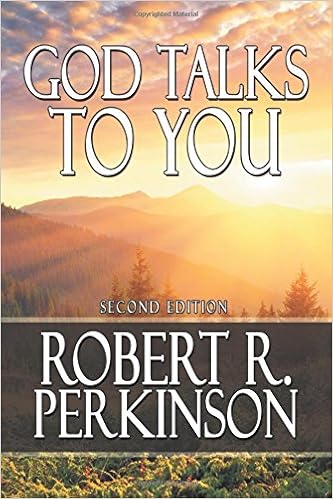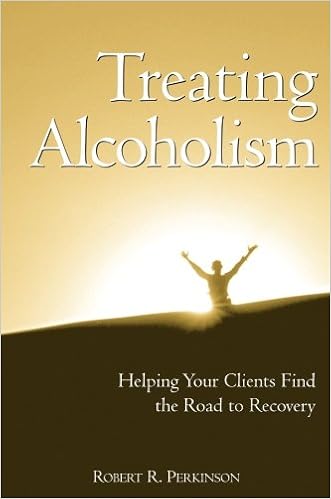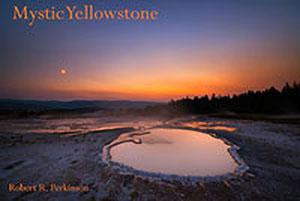Alcoholism | Teenage Alcoholism
Alcoholism Rehab Video: The Behavior Chain Part 2
No one knows when alcohol was first produced but it was most likely to be a natural occurrence. If any watery mixture of vegetable sugars or starches is allowed to stand for about three months in a warm place, alcohol will make itself. Yeast that exists in the air everywhere will land on the juice and being to eat the sugar, making carbon dioxide and alcohol as waste. The alcohol content in the juice continues to rise until all of the yeast cells are killed. Therefore, alcohol is a poison to all living creatures even to the organisms that make it. Nature alone cannot produce anything stronger than 14% alcohol, but by distillation, the percentage can then be increased to 93% (Courtwright, 2001).
The early detection of alcohol abuse and dependency is complicated by denial that is found in the individual, in the family, and in society. Long-term alcohol dependence has profound effects on personality, mood, cognitive functioning, and a variety of physiological problems involving virtually all organ systems. The interaction of alcohol and other drugs may lead to fatal overdoses (Frances & Franklin, 1988).
Alcoholism is the result of a complex interaction of biological vulnerability and environmental factors. Environmental factors such as childhood experience, parental attitudes, social policies, and culture strongly affect the vulnerability to alcoholism. Genetic variables significantly influence the disease. There is no personality that causes alcoholism (Vaillant, 2003; Goodwin, 1985).
Alcohol-Induced Organic Mental Disorders
Alcohol Intoxication
Alcohol intoxication is the most frequent organic-induced mental disorder. It is time limited, and it may occur with varying amounts of ingested alcohol. The intoxicated individual exhibits maladaptive behavioral changes due to recent ingestion. These changes may include aggressiveness, impaired judgment, impaired attention, irritability, euphoria, depression, emotional liability, and other manifestations of impaired social functioning. Although alcohol is a CNS depressant, its initial effects disinhibit the individual. Early in intoxication, the person may feel stimulated with an exaggerated sense of well-being. With further use, the person may slow down and become depressed, withdrawn, and dull. The person may even lose consciousness (Inba and Cohen 2007; Spitzer, 1987; Woodward, 1994).
Alcohol Amnestic Disorder-Blackout
Alcohol amnesic disorder, or a blackout, is a period of amnesia during periods of intoxication. The person may seem fully conscious and normal when observed by others, but the person is unable to remember what happened or what he or she did while intoxicated. The disorder may last for a few seconds or for days. The severity and duration of alcoholism correlate with the frequency of occurrence of these blackouts (Goodwin, 1971; Goodwin, Crane, & Guze, 1969.
Wernicke-Korsakoff Syndrome
Wernicke-Korsakoff syndrome is a neurological emergency that should be treated by the immediate IM administration of thiamine. The symptoms begin with a sudden change in organic functioning. The client becomes ataxic with a wide-based unsteady gait. The person may be unable to walk without support. The client is mentally confused and unable to transfer memory from short- to long-term memory. The client may be disoriented, listless, inattentive, and indifferent to the environment. Questions directed at the client may go unanswered, or he or she may fall asleep while being examined. The etiology of this syndrome involves a thiamine deficiency due to dietary, genetic, or medical factors. All clients with compromised mental functioning or a deficit in memory need to be examined by the medical staff as soon as possible to prevent further brain damage (Braunwald et al., 1987).
Alcohol Withdrawal
Alcohol withdrawal symptoms relate to a relative drop in alcohol blood levels. Withdrawal can occur when the individual is still drinking. The classic withdrawal symptom is a coarse fast frequency tremor observed when the client’s hand or tongue is extended. The tremor is made worse by motor activity or stress. The client may experience nausea and vomiting, malaise, weakness, elevated pulse and blood pressure, anxiety, craving, depressed mood, irritability, transient hallucinations, headache, and insomnia. These symptoms follow several hours after cessation or reduction in alcohol intake and peak within 72 hours. They usually disappear within 5 to 7 days of abstinence. The client in alcohol withdrawal is treated with a cross-tolerant drug similar in pharmacological effects to alcohol, usually one of the benzodiazepines. This stabilizes the client in a mild withdrawal syndrome (Mayo-Smith, 2009).
Alcohol Withdrawal Seizures
Withdrawal seizures may occur 7 to 38 hours after the last alcohol use in chronic drinkers. The tendency to seizure peaks within 24 hours (Adams & Victor, 1981; Mayo-Smith, 2009).
Alcohol Withdrawal Delirium (Delirium Tremens)
One third of clients with seizures go on to develop alcohol withdrawal delirium or delirium tremens. This is characterized by confusion, disorientation, fluctuating or clouded sensorium, and perceptual disturbances (Adams & Victor, 1981; Mayo-Smith, 2009). Typical symptoms include delusions, vivid hallucinations, agitation, insomnia, mild fever, and marked autonomic arousal. The client frequently reports visual hallucinations of insects, small animals, and other perceptual disturbances. The client may be terrified. The delirium typically subsides after a few days, but it can continue for weeks (Gessner, 1979).
You must take addiction seriously because 25% of Americans die as a result of substance abuse. The average alcoholic dies twenty-six years earlier than he or she would otherwise.
Find a treatment facility near you
Begin Alcoholism Treatment at Home: Many patients like to start recovery at home. If you cannot bring the problem under control using this self-help approach, you will need to consider inpatient or outpatient treatment.
 Chemical Dependency Counseling: A Practical Guide, Fifth Edition: is a best-selling comprehensive guide for counselors and front-line professionals who work with the chemically dependent and addicted in a variety of treatment settings. The text shows the counselor how to use the best evidence-based treatments available, including motivational enhancement, cognitive behavioral therapy, skills training, medication and 12 step facilitation. Guiding the counselor step-by-step through treatment, this volume presents state-of-the-art tools, and forms and tests necessary to deliver outstanding treatment and to meet the highest standards demanded by accrediting bodies.
Chemical Dependency Counseling: A Practical Guide, Fifth Edition: is a best-selling comprehensive guide for counselors and front-line professionals who work with the chemically dependent and addicted in a variety of treatment settings. The text shows the counselor how to use the best evidence-based treatments available, including motivational enhancement, cognitive behavioral therapy, skills training, medication and 12 step facilitation. Guiding the counselor step-by-step through treatment, this volume presents state-of-the-art tools, and forms and tests necessary to deliver outstanding treatment and to meet the highest standards demanded by accrediting bodies.
 The Alcoholism and Drug Abuse Client Workbook, Third Edition:An evidence-based program that uses treatments including motivational enhancement, cognitive-behavioral therapy, skills training, medication, and 12-step facilitation. It provides a venue for clients to write down their thoughts and experiences as they progress through treatment.
The Alcoholism and Drug Abuse Client Workbook, Third Edition:An evidence-based program that uses treatments including motivational enhancement, cognitive-behavioral therapy, skills training, medication, and 12-step facilitation. It provides a venue for clients to write down their thoughts and experiences as they progress through treatment.
 The Gambling Addiction Client Workbook, Third Edition:An evidence-based program that uses treatments including motivational enhancement, cognitive-behavioral therapy, skills training, medication, and 12-step facilitation. This workbook walks clients through self-reflective activities and exercises meant to help them recognize the underlying motivations and causes of their gambling addiction and to learn the tools necessary for recovery. The Third Edition of this workbook includes coverage of all 12 steps of recovery. Chapters focused on honesty and relapse prevention as well as a personal recovery plan contribute to client success.
The Gambling Addiction Client Workbook, Third Edition:An evidence-based program that uses treatments including motivational enhancement, cognitive-behavioral therapy, skills training, medication, and 12-step facilitation. This workbook walks clients through self-reflective activities and exercises meant to help them recognize the underlying motivations and causes of their gambling addiction and to learn the tools necessary for recovery. The Third Edition of this workbook includes coverage of all 12 steps of recovery. Chapters focused on honesty and relapse prevention as well as a personal recovery plan contribute to client success.
Treating Alcoholism: Helping Your Clients Find the Road to Recovery:
Alcoholics are one of the most difficult client groups to treat effectively. To preserve their way of life, they may lie about their problem or deny that one exists; that is the nature of this profoundly powerful disease. Yet if you can guide each of your clients through their own resistance towards the truth, not only will you be rewarded with starting them on the road to recovery, you will no doubt have saved their life as well. Achieving such a victory goes to the heart of being an addiction counselor; it is the experience of healing on a direct and tangible level.
Treating Alcoholism provides a complete road map for assessing, diagnosing, and treating this multifaceted and tenacious illness. Detailed clinical information on the disease accompanies ready-to-use tools for practice. With a special emphasis on the 12 Steps of Alcoholics Anonymous, the author walks you through the first five steps of this established methodology in comprehensive detail, showing how to easily apply each one to treatment.
The Big Book of Alcoholics Anonymous says that only God can relieve the illness of addiction. Here are a few spiritual tools to help you:
 God Talks to You: Second Edition: God wants to communicate with you. God has been calling you for a long time. You have wanted God to speak to you for a long time. You have wanted to talk to God and get answers back. Here are a few quotes from spiritual leaders who have read the book: Reverend Mark Holland: “After reading Dr. Perkinson's book, I spent several minutes quieting myself, and then I asked God if there was a message for me. “Mark I’ve missed you!” Although there were no words spoken, I felt this message very clearly. I was quite surprised. Daily I was involved with spiritual matters, praying, preaching, and counseling. Nevertheless, I discovered that God was lonely for me.” Reverend Dave Waldowski: “This book and tape do not only “discuss” communication with God, moreover if you follow these simple principles you will “experience” and “hear” God’s voice on a daily basis.”
God Talks to You: Second Edition: God wants to communicate with you. God has been calling you for a long time. You have wanted God to speak to you for a long time. You have wanted to talk to God and get answers back. Here are a few quotes from spiritual leaders who have read the book: Reverend Mark Holland: “After reading Dr. Perkinson's book, I spent several minutes quieting myself, and then I asked God if there was a message for me. “Mark I’ve missed you!” Although there were no words spoken, I felt this message very clearly. I was quite surprised. Daily I was involved with spiritual matters, praying, preaching, and counseling. Nevertheless, I discovered that God was lonely for me.” Reverend Dave Waldowski: “This book and tape do not only “discuss” communication with God, moreover if you follow these simple principles you will “experience” and “hear” God’s voice on a daily basis.”
Peace Will Come CD Sit back and let the words and music sink into your soul. Come back often and play the songs over and over again. You won't be sorry. God will teach you many things you need to know.
A Communication From God: A meditation tape that will give you long communications from God. The tape takes you through two exercises where God speaks to you directly.
Trevor Howard, the sheriff of Teton County Wyoming, is contemplating an explosion of cocaine addiction, four structure fires and the murder of a six-year-old boy in his jurisdiction. The boy had a wooden cross penetrating his heart indicating a possible religious connection. Trever has the idea of hiring a young woman deputy with experience in undercover narcotics investigation. Simultaneously, Doctor Abe Anderson, Trevor’s best friend, meets Heather Cutler, acting in a play as the red headed demon of seduction. Abe falls in love with her and even more with his first experience with cocaine. Trevor is usually a confident police officer but these crimes, coming all at once, leave him feeling deeply troubled. Before it’s done his whole life, friendships and family will show him how terribly he has underestimated his greatest fears.
Joan Worthing has a new job as a seasonal ranger in Yellowstone National Park. She is hoping to escape a long history of physical and sexual abuse by her brother Teddy who is schizophrenic. Teddy escapes from a mental hospital and rushes to find her. He believes she must have his child who will save the world from an alien invasion. He is desperate to find Joan and save the world. Doctor Rand Holland, a psychologist in new recovery from alcoholism, becomes involved in the search for Teddy and the protection of Joan. One of Rand’s teenage patients Lela Lander runs away from home seeking help from Rand. She becomes involved with a Satanic coven in Denver run by Lonn Majors. All these characters meet in Yellowstone as the coven holds a Halloween ritual sacrifice that will bring Satan to earth for the ultimate battle between good and evil.
Addiction stops your spiritual progress. Begin a new spiritual journey: www.godtalkstoyou.com
Read the latest research for a school paper or project from the National Library of Medicine





